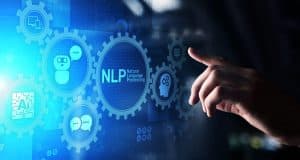
Use of natural language processing is on the rise, aiding businesses in multiple ways.
The prevailing attitude towards artificial intelligence is that it can only be applied to roles and industries which are data-driven, while humans are still the masters of creative and qualitative pursuits. That is being challenged by the rise of natural language processing (NLP), a branch of AI that mimics human approach to language processing.
Webinar: Power your digital transformation efforts with IBM API Connect on AWS [Register Now]
For businesses, natural language processing can be integrated into a wide range of processes and can be used in different ways, including:
- Speech recognition: NLP is already deployed by some newspapers and magazines to transcribe interviews, removing the need to manually write up the Q&A afterwards. As NLP can analyze the text, it may be able to highlight the important parts of the discussion.
- Summarization: As mentioned before, NLP is able to analyze the text and pull out of the relevant parts. For industries which deal with lengthy documents, like those in the legal profession, the ability to circumvent most of the unnecessary pages could speed up the process.
- Chatbots: One of the first NLP solutions built for consumers, chatbots are able to understand simple queries and direct customers to the right support links, enabling employees to prioritize more complex queries.
- Suggestions: Writer’s block happens in a lot of industries, and NLP could be a way to break through it. With suggestive typing, users can decide on a range of structure for sentences. This can also be deployed in academia, as a tool to suggest literature that fits with the topic.
One of the best things about NLP is it does not require a business to overhaul their processes. For speech recognition, the AI can listen in on Zoom or phone calls, writing up the transcription in the background. Similarly, coding and writing suggestions can be integrated into the word processor or code editor.
See also: Integration Needs Scalability, User-Friendly Interface
NLP for integration
One area where NLP is finding use is in aiding business teams that are trying to develop new applications and services. Often, the challenge is that these teams need access to a variety of data sources, many of which are siloed.
A common way to get around the problem is to have data scientists and developers provide a means to bring the data together for analysis, to be used in an application, or to be part of a workflow. Unfortunately, the speed of modern business makes waiting for these groups to act impractical.
Increasingly, there is a need for automated integration capabilities that make use of technologies including artificial intelligence (AI), NLP, and no-code/low-code development methods. For example, NLP might be used at the start of a project that requires integration. The business team could then simply describe the integration it needs. An AI-powered automation solution could then use those words to recommend various integration templates the team might use in its project. And finally, an AI-powered automation solution would create the integration workflows once the business team selects a template.
Such an approach will greatly speed integration efforts. This, in turn, will help organizations realize value from data that had been previously locked into silos.
*Salvatore Salamone contributed to this article.
Webinar: Power your digital transformation efforts with IBM API Connect on AWS [Register Now]







